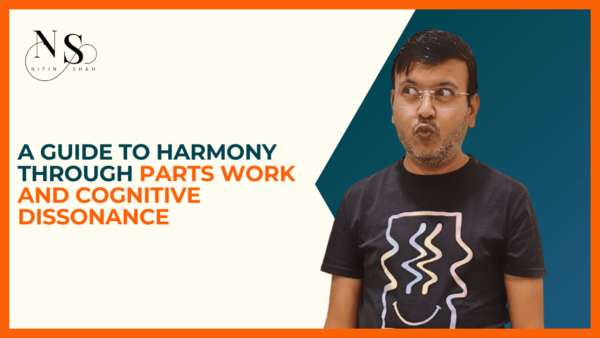Welcome to the intricate realm of parts work in therapy, a captivating journey into the multifaceted landscape of the human psyche. As we embark on this exploration, it’s essential to trace the roots of parts work and understand its evolution over time.
Unveiling Historical Foundations
In the early days, parts work found its roots in psychodynamic therapy, influenced significantly by Freudian psychology. The idea that the psyche is not a singular entity but a complex interplay of various aspects began to take shape. However, it was the emergence of Internal Family Systems (IFS) that truly propelled parts work into the spotlight, thanks to the pioneering work of Richard Schwartz.
But parts work doesn’t stand alone in the therapy landscape. Enter gestalt therapy, championed by Fritz Perls, emphasizing a holistic approach. The connection between gestalt therapy and parts work is not just coincidental; it’s a harmonious integration of understanding the whole by exploring its individual components.
Theoretical Foundations: Parts, Self, and Inner Dynamics

Imagine the psyche as a dynamic orchestra, each part representing a different instrument. The ‘Self’ conducts this symphony, orchestrating harmony or discord. Parts work revolves around understanding and harmonizing these various instruments, acknowledging the diverse roles they play within the psychological orchestra.
This concept is not exclusive to parts work alone. Ego state work, as envisioned by Eric Berne’s Transactional Analysis, provides a lens through which we can view the different states of the ego, each with its unique role. Additionally, the inner child work in hypnosis takes us deeper into the layers of the psyche, unraveling the threads that connect us to our past and shape our present.
Let’s not forget the world of Neuro-Linguistic Programming (NLP), a cognitive approach that dives into how language and thought patterns influence our experiences. NLP brings a toolkit of strategies that seamlessly align with parts work, offering additional avenues for exploration and intervention.
Core Concepts: Subpersonalities, Exiles, Firefighters, and Managers

Now, picture these psychological instruments as subpersonalities, each playing a distinct tune. Subpersonalities embody different facets of our personality, from the joyful to the wounded. In parts work, we delve into these subpersonalities, understanding their unique contributions and challenges.
There are, however, the exiles — the aspects of ourselves we’d rather not face. Parts work bravely confronts these repressed and vulnerable components, acknowledging the need for healing and integration.
Protective parts, aptly named Firefighters and Managers, take the stage when emotions run high. Firefighters react impulsively to put out the emotional fires, while Managers strive to maintain control. The delicate balance between these roles is a key focus in parts work.
Therapeutic Techniques: Dialogue, Integration, and More

Engaging with these internal players requires therapeutic finesse. Externalization becomes a powerful tool, allowing clients to observe and interact with their parts from a distance. Dialogue then emerges as a bridge, facilitating communication and understanding between the various aspects.
Gestalt techniques, such as role-playing and the famous empty-chair exercises, add a tangible dimension to the therapeutic process. Ego state interventions bring Transactional Analysis techniques into the mix, contributing a structured approach to parts work.
Hypnosis, particularly in inner child work, serves as a portal to our past selves. Guided by skilled therapists, clients can revisit and heal wounds carried by their inner child. Meanwhile, NLP strategies, with their emphasis on reframing and anchoring, offer innovative ways to navigate the intricate web of psychological components.
Applications: Personal Growth, Relationships, and Beyond
Parts work isn’t confined to individual therapy alone. It extends its reach into relationship and family therapy, shedding light on family dynamics and fostering improved communication. In essence, it becomes a roadmap for personal growth, leading individuals towards a more integrated and harmonious self.
Navigating Criticisms and Charting Future Paths
Yet, no therapeutic approach is without its criticisms. Parts work faces challenges in providing empirical evidence of its effectiveness, and ethical considerations surround the potential misuse of techniques. Despite these hurdles, the ongoing evolution of parts work promises exciting developments and further integration with other therapeutic modalities.
Conclusion: A Symphony in Progress
As we conclude our journey into the heart of parts work, we find ourselves standing on the precipice of a psychological symphony. The melody of subpersonalities, the rhythm of internal dynamics, and the harmonious interplay of protective roles create a symphony unique to each individual.
The call to further explore and understand the potential of parts work echoes in our minds, resonating with the ongoing evolution of this therapeutic approach. Just as a symphony is never static, but always evolving, so too is our understanding of the intricate dance within the human psyche.




